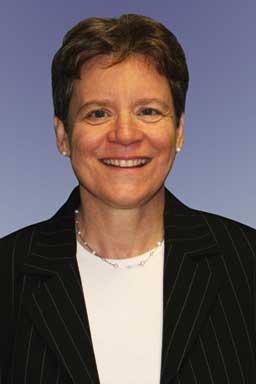If you visited the display provided by Tina Smith at the 2009 AASV Annual Meeting, you would have seen tangible evidence of how the journal has evolved over time. We strive for continual improvements to serve the readers and authors to the best of our ability while still focusing on our purpose: to provide access to up-to-date, relevant, scientifically strong, and applied research.
At the editorial board meeting during the annual meeting, we discussed the concern that some authors submit manuscripts describing research that has not undergone a review by an animal care committee. This is not as straightforward as you might think. There are country-to-country differences in both regulations and review-committee expectations. As an example, for the research work that I conduct in Kenya, the Kenyan government reviews and approves research projects involving animals and farmers. The approval of my project came from the Veterinary Director General’s office in Nairobi. In Canada, the same research project was reviewed and approved by the Animal Care and the Human Ethics Committees at the University of Guelph. It is unrealistic for the editorial board to expect all research to be reviewed in the same manner as that at the University of Guelph. Some research work is conducted by private practitioners. A private practitioner, with the approval of the owner of the farm, may choose to conduct a field trial to compare one biological to another. In this process, the team may choose to ear-tag a group of pigs, randomly assign the pigs to two treatments, and then collect serial blood samples from a subset of the pigs. The results are then used to make treatment or vaccination decisions on the farm. The criteria that we currently use at JSHAP to determine whether a study should be evaluated by an animal care committee is that the pigs are subjected to manipulations beyond those performed during routine herd-health work of the veterinarian. Was this routine veterinary work? I do not think so. As you can see, this continues to be a challenge both for authors and for the editorial board.
During the annual meeting, we also held a focus-group meeting with a selected team of readers representing veterinarians in academia, industry, and private practice in order to gather the “pulse” of these readers. It was an opportunity for the members to share their concerns and for the staff to ask for their opinions about potential changes to the journal. The group believed that the journal should continue in its printed form, enabling readers to carry the journal to read as they travel. We discussed the fact that the journal is paid for entirely by industry support and that the availability of messaging by the industry to the readership is important. They appreciated the opportunity to access the journal online and in the CD format. The fact that the journal is now accessible through Google Science was thought to be very positive.
There was ongoing discussion about the advantages to being listed by Medline and the importance of this for our authors. The principle change after the first review was to add Spanish and French translations of our abstracts. There was discussion about whether or not there was the political will to add JSHAP to Medline. Further, it was suggested that members contact their senators prior to the next Medline submission. The concerns expressed during the previous review were the inclusion of advertisements by industry groups and the narrow focus of the journal. There are definitely other journals listed with Medline that include industry ads and others with a narrow focus.
We live in a global economy. The more we know and understand about the swine industry in the rest of the world, the better we will be able to work as professionals in this global pig industry. Understanding diseases from other countries will help us to be prepared for the next emerging disease. Our best opportunity to widen the focus is to include manuscripts from countries other than the United States and Canada. If you are working on a project overseas, please share that with our readers as either a case report, original research, or a production tool. If you know of a researcher in another country who has completed a scientifically sound applied research project, suggest they submit their manuscript to JSHAP for publication. Another suggestion was to encourage placement of the journal in veterinary-school libraries in Europe, Asia, South America, Australia, and New Zealand. We presently have a very good turn-around time from submission to publication, providing timely sharing of applied research.
As the journal evolves, we are pleased to launch a new series on practical, short, swine-nutrition summaries that can be photocopied and used in the field.
Another new initiative is a consortium document outlining the key factors required for an unbiased evaluation of new biologicals. There is currently a consortium document outlining the steps required to perform a non-biased field trial to evaluate new biological products for use in human medicine (www.consort-statement.org). A team of academicians from across North America has been revising this document for use in veterinary medicine, hosting a 2-day workshop in the fall of 2008 to further refine the document prior to publication. Over the next few months, the revised document will be published simultaneously in several veterinary journals, including JSHAP. This then will form the basis of the expected criteria for field trials evaluating new veterinary biological products. Authors will be expected to follow these guidelines or will be asked to describe why the guidelines were not followed and the implications. The consortium document will also provide reviewers with a template by which to review manuscripts.
-- Cate Dewey, DVM, MSc, PhD

